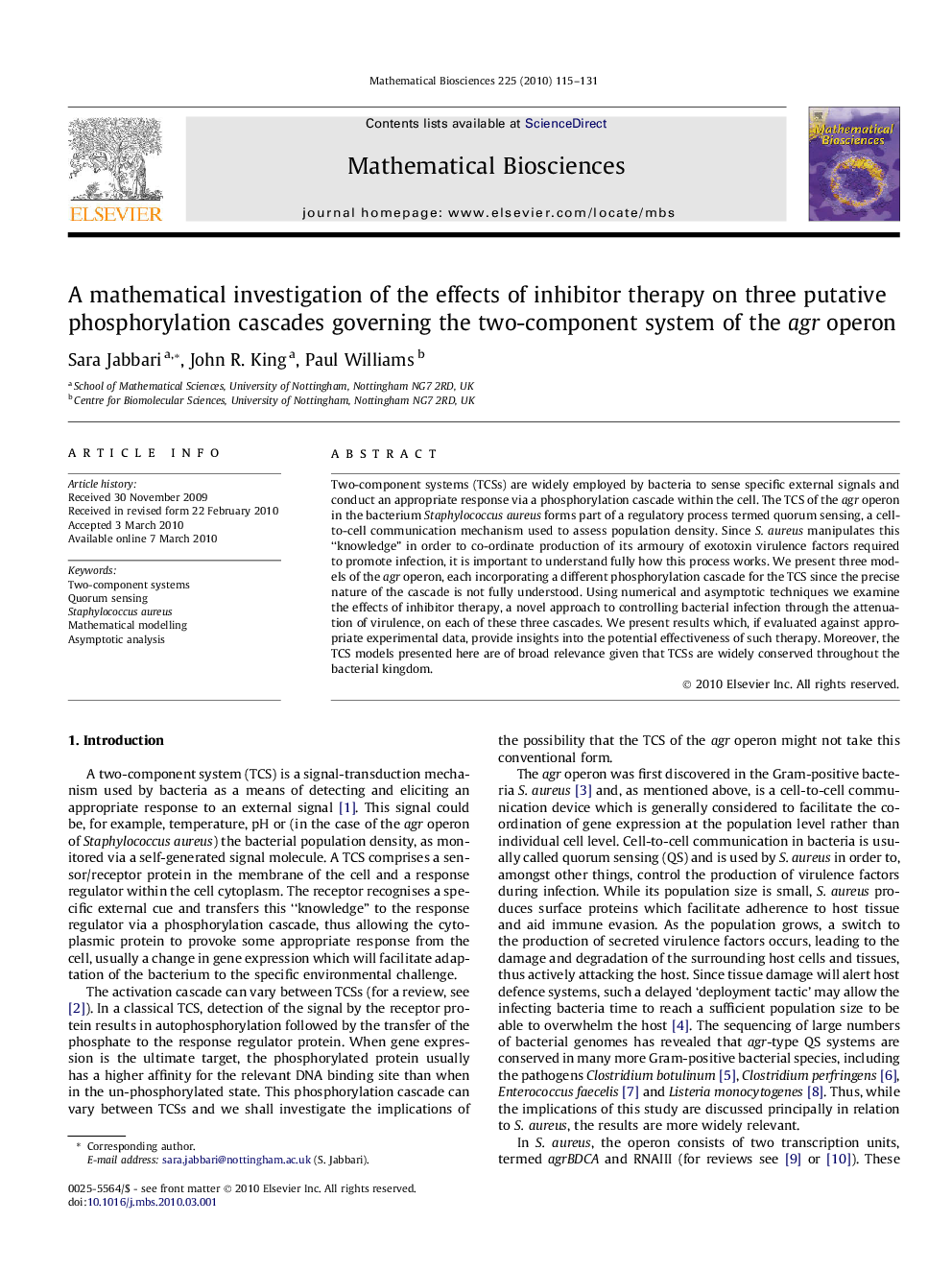| Article ID | Journal | Published Year | Pages | File Type |
|---|---|---|---|---|
| 4500501 | Mathematical Biosciences | 2010 | 17 Pages |
Two-component systems (TCSs) are widely employed by bacteria to sense specific external signals and conduct an appropriate response via a phosphorylation cascade within the cell. The TCS of the agr operon in the bacterium Staphylococcus aureus forms part of a regulatory process termed quorum sensing, a cell-to-cell communication mechanism used to assess population density. Since S. aureus manipulates this “knowledge” in order to co-ordinate production of its armoury of exotoxin virulence factors required to promote infection, it is important to understand fully how this process works. We present three models of the agr operon, each incorporating a different phosphorylation cascade for the TCS since the precise nature of the cascade is not fully understood. Using numerical and asymptotic techniques we examine the effects of inhibitor therapy, a novel approach to controlling bacterial infection through the attenuation of virulence, on each of these three cascades. We present results which, if evaluated against appropriate experimental data, provide insights into the potential effectiveness of such therapy. Moreover, the TCS models presented here are of broad relevance given that TCSs are widely conserved throughout the bacterial kingdom.
